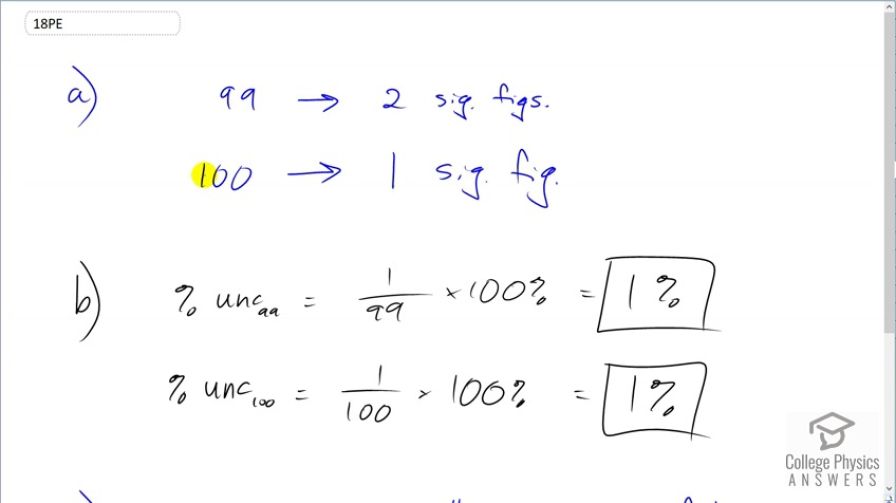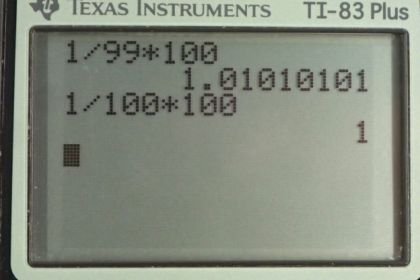Question
(a) How many significant figures are in the numbers 99 and 100? (b) If the uncertainty in each number is 1, what is the percent uncertainty in each? (c) Which is a more meaningful way to express the accuracy of these two numbers, significant figures or percent uncertainties?
Final Answer
- 99 has 2 significant figures. 100 has 1 significant figure, although it's a bit ambiguous since perhaps it has 2 or maybe 3 depending on whether the zeros are considered significant. I assume 100 has 1 significant figure since it should otherwise be written in scientific notation to indicate if it has more than one.
-
- % uncertainty is usually a more meaningful way of expressing uncertainty since it puts the uncertainty in perspective by comparing it with the measurement.
Solution video
OpenStax College Physics for AP® Courses, Chapter 1, Problem 18 (Problems & Exercises)

vote with a rating of
votes with an average rating of
.
Calculator Screenshots
Video Transcript
This is College Physics Answers with Shaun Dychko. The number 99 has two significant figures and the number 100 is a little bit ambiguous; one could say that it has one significant figure or two or maybe three—it's not really clear— and so I usually assume that this number written this way has only one significant figure. Part (b) asks us for the percent uncertainties so the percent uncertainty in the number 99 measurement is the error which is 1 divided by 99 times a 100 percent which is 1 percent and I express this with one significant figure since our error in the measurement of 1 has only one significant figure. And likewise for the measurement of 100, 1 divided by 100 times a hundred percent is also 1 percent uncertainty. And the percent uncertainty is usually a more meaningful way of expressing uncertainty because if your uncertainty is plus or minus 1 and your measurement is, you know, 1001 that means something different than an uncertainty of plus or minus 1 when your measurement is only 10. I mean this is a 10 percent error whereas this is, you know, a 0.1 percent error so the percent error or percent uncertainty reflects the difference in these two scenarios.
